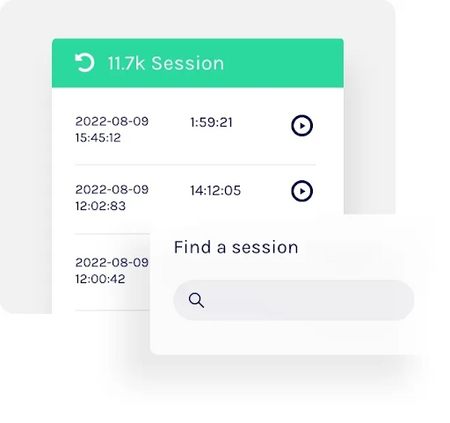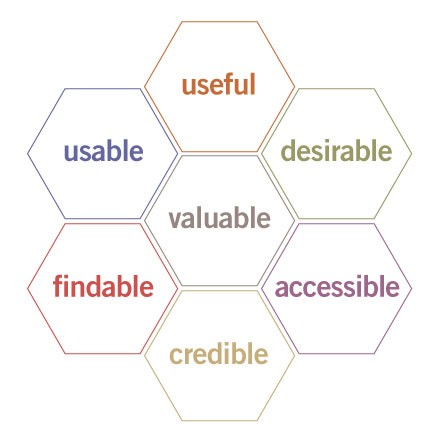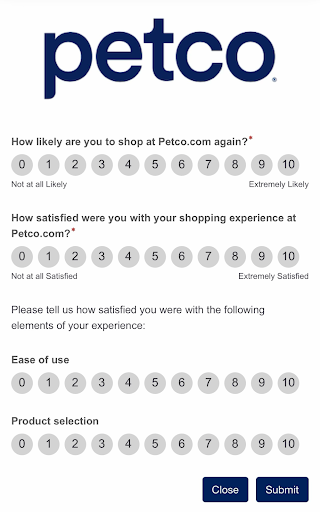CRO Audit Framework: The Complete Guide
Welcome to our comprehensive guide on the CRO audit framework, your roadmap to elevating conversion rate optimization strategies with a wealth of proven techniques and insights.


Key takeaways
You don’t know what you don’t know. A CRO audit uncovers why your website isn’t converting—why your visitors aren’t completing the actions you want them to.
Knowledge is power. Understanding your buyer’s behavior and what is going well vs. where the pain points are will set you up to focus your CRO efforts on the right things.
A CRO audit is not “one and done.” For continued success, monitor the results and continue using your CRO audit framework to track and implement changes on an ongoing basis to ensure your conversion rates continue to climb.
What is a CRO audit?
A conversion rate optimization audit is a process for systematically reviewing your website from the customer’s point of view and identifying areas for improvement. With this knowledge, you can fix the issues causing cart or page abandonment and improve your conversion rates.
We can compare a CRO audit to medical diagnostics: Tom wrenched his back moving furniture. Hunched over in pain, Tom needed help. He had a problem (pain/injury) that was affecting his daily activities (inability to walk upright, do his job, walk his dog, take care of his home, etc.).
Tom’s doctor sent him to a specialist who ordered various tests until they reached a diagnosis—a herniated disc! He received a treatment plan with multiple components (medication, physical therapy, chiropractor, acupuncture). Tom followed his treatment plan and eventually got the relief he needed to function fully again.
Maybe your CRO results will require just a few easy tweaks, or it could need the equivalent of major back surgery, but you won’t know without the audit.
Why conduct a CRO audit?
A CRO audit is the best way to identify what holes and gaps exist in your funnel and learn what changes to make to your website for increased conversions. Skipping the audit process will leave you guessing and trying solutions that don’t work. You need to do the work to find the keys to conversion.
Later, we provide a straightforward, step-by-step audit framework you can easily adopt. But first, let’s dive into why a CRO audit is a good, strategic decision for your business.
User journey analysis
The most fundamental benefit of conducting a CRO audit is understanding how users (prospects and customers) travel through your website and app. This conversion funnel tracking is essential in pinpointing gaps. It helps us understand the user’s path through the funnel to identify where there’s a drop-off.
A/B testing and experimentation
Conducting A/B tests and experiments helps identify elements that hinder conversions and reveal what changes improve performance.
This straightforward but powerful process compares the experience of two sets of visitors (Group A and Group B) whose experience is identical except for a single variation of an element.
What can your web team determine from A/B testing? Some of the key takeaways are bounce rates, which pages are underperforming and actionable page element tweaks in your content to make users want to engage. This article on conversion rate optimization tools and software may provide even more inspiration.
Usability and user experience (UX) evaluation
How your audience feels about and interacts with your website and mobile app is the difference between thriving and failing. Confusing navigation, broken links or text overload will make them jump ship—and likely paddle over to your competitor’s site, credit card in hand.
Reviewing UX design and usability uncovers issues that create friction in the funnel. Behavioral analytics tools enable you to see what your users are doing but not why they behave that way. This applies to mobile optimization, too—don’t underestimate the number of people accessing your website via mobile devices. You want to keep their user experience top of mind as well.
Content relevance and messaging alignment
Your team has spent countless, valuable hours creating and fine-tuning your content. But if it doesn’t resonate with your audience—if it’s not engaging, relevant or doesn’t drive them to take action—you’ve missed the bus.
This is especially true for landing pages, which are generally your single best chance for conversion.
A CRO website audit helps ensure that each page’s content aligns with user intent and expectations, which is crucial to guiding users toward conversion.
Form and checkout process analysis
How many times have you started filling out an online form only to abandon it before completion? Was it too time-consuming? Were you asked for information you weren’t comfortable providing? Or maybe it was a glitchy, frustrating process.
If you’ve been there, you’re among the 81% of website visitors who have felt your pain and gave up.
Analyzing the efficiency and user-friendliness of forms and checkout processes is vital for businesses conducting an e-commerce CRO audit, as it can identify major gap creators that could undermine conversions. Not surprisingly, trust—or lack of it—is another common reason for form or cart abandonment. The sooner you can detect and remedy these problems, the sooner you can get visitors to complete your desired actions.
Cost savings
Conversion barriers cost you money. Once you identify and mitigate them, you’ll see more conversions from the traffic you already have. Eliminating barriers saves marketing dollars through reduced spending to acquire new customers.
Now you understand some of the reasons for a CRO audit, so let’s move on to preparing and conducting your audit.
Preparing for a CRO audit
Preparing for a conversion rate optimization audit is the crucial first step toward improving your website's performance and conversion rates. Following the steps below FIRST will ensure the audit process is as smooth and successful as possible.
Define clear objectives and goals for the audit. When your audit is complete, and you’re sitting back to watch the results, popcorn in hand, what would make you say, “Okay, that was worthwhile?” More sign-ups? Increasing sales or lead generation? Driving more form submissions? Whatever the objectives are, you must define them first.
Identify KPIs. What are the key performance indicators that you’ll track? Conversion rate is obvious, but others will depend on the nature of your business. They can include bounce rate, exit rate, click-through rate (CTR), page load time, average order value (ARV) and session duration.
Assemble the necessary tools and resources. This can include a digital experience intelligence (DXI) platform to collect and analyze data effectively. Also, it’s critical to properly configure your analytics and tracking systems to capture user interactions and conversions accurately.
Gather baseline data. You want to make sure you have data for comparison. Historical data related to your website and app's performance (user behavior data, web analytics, mobile analytics, data from A/B tests, etc.) will ensure you have what’s needed to make informed decisions about necessary changes.
By setting clear goals and equipping yourself with the right tools and information, you'll be ready to embark on a comprehensive CRO audit that can significantly improve your online conversion rates and user experience.
10 steps to implement a CRO audit framework
Some businesses will need to complete more steps than others; for instance, an e-commerce site audit will likely be more in-depth than one for a professional services firm or other B2B companies. You can determine which steps apply to your website.
As a review: A CRO audit framework involves incrementally evaluating your website or digital platform to identify areas for improvement in conversion rates.
Below are the 10 steps to conduct a thorough CRO audit.
1) Define objectives and goals
We touched on this previously, but it’s important enough to reiterate that without identifying upfront what your goals and objectives are for the audit, your results will suffer. The goals drive HOW you conduct the audit process and WHAT you analyze. It could be a specific web page, for example, or how your customers engage with it specifically, like user journeys, A/B testing, conversion funnels and analytics. So make those determinations first to increase conversions, improve user engagement and enhance user experience.
2) Select the right user behavioral analytics tools to collect and analyze data
Understanding how users behave on your website or app is critical to improving the customer experience and ultimately driving conversions. Many different types of behavioral analytics tools exist to help businesses gain insights from their customer behavior. Here’s an overview of these tools and how they work:
Heatmap tools

A valuable resource in the behavioral analytics toolbelt is heatmaps (or interaction maps, which are the next generation of heatmap tools). These tools offer a visual overview of user behavior and actions using color-coded overlays. The overlays represent aggregated data on interactions such as clicks, scrolls and cursor movements—or taps, scrolls and pinches for mobile users. Heatmaps are a helpful method for identifying areas of interest, friction, engagement and attention along the customer journey due to their visual nature.
👉🏻 To see examples, reference our Complete Guide to Heatmaps.
Session replay tools

Session replay tools offer video-like reconstructions of an individual user’s path on your website or app. These tools give you visibility into actions like mouse movements, clicks, scrolls and form inputs, or for mobile users, they capture every tap, scroll and pinch. Reviewing and analyzing these interactions, both on an individual basis and collectively, will give you a comprehensive understanding of how users engage with your website or app. Session replays are highly effective for pinpointing usability issues, uncovering user frustrations and struggles and delivering critical insights for optimizing the overall user experience.
👉🏻 Want to learn more? Explore our Comprehensive Guide to Session Replay.
Voice of customer (VoC) tools

Voice of customer tools capture and analyze feedback directly from customers so you can better understand their needs, preferences and expectations. The data is collected through numerous channels such as surveys, feedback forms, online reviews, social media and customer support interactions. VoC tools are useful for gaining an in-depth understanding of customer sentiment, satisfaction levels, pain points and suggestions for improvement. We get more into voice of customer insights later in the blog, so keep reading!
👉🏻 Check out The Complete Guide to Voice of the Customer to learn more.
A/B testing tools

A/B testing tools let you experiment with different variations of your website, app and digital experience. Offering different variants lets you analyze how differences impact user behavior. You can optimize digital experiences and maximize conversion rates by comparing the effectiveness of different elements, layouts, designs, CTAs, content and more.
👉🏻 Get more details in our Complete Guide to A/B Testing.
Limitations of standalone behavioral analytics tools
There are plenty of standalone behavioral analytics tools that you can use to better understand how customers are behaving on your website or app, but a piecemeal approach has limitations and can’t provide the context that tells you why. A digital experience intelligence platform like Glassbox provides rich insights giving you a complete picture of what your customers are doing on your digital platforms and the critical data to uncover why.
3) Analyze website design and user experience (UX)
Website design and user experience go hand in hand. Conducting a comprehensive UX assessment will bring fundamental problems into the spotlight.
Conducting a technical site audit will identify performance-related problems, such as navigation errors, slow page load times, broken links, mobile responsiveness issues—and even content quality. These can be frustrating for your customers but often are simple to fix. Just because a website or app is visually appealing doesn’t mean it provides a good user experience.
The real user experience honeycomb checklist
The user experience honeycomb below covers the most important parts of UX. Refer back to this handy checklist when you’re analyzing your website design and UX.

✔️Useful: Is your website useful to your audience? Is it answering questions that they have? The more useful and relevant visitors find it, the better the user experience is.
✔️Desirable: Your website and app should be easy to navigate and load quickly but also stand out in terms of design, graphics and other visual elements.
✔️Accessible: Just as buildings have elevators and ramps, your website and app need to be accessible to people with disabilities.
✔️Credible: Visitors need to trust your website and app in order to convert. If you don’t build credibility through design and user experience, you’re losing conversions.
✔️Findable: If visitors can’t easily find what they need on your website or app, consider that a missed opportunity.
✔️Usable: The digital experience your website and app provide needs to be simple and feel natural to visitors. If they can’t figure it out or are confused, that will also lead to missed conversion opportunities.
✔️Valuable: Your website and app need to improve customer satisfaction.
4) Set up and analyze conversion funnels

Setting up conversion funnels is a critical component of a robust conversion rate optimization framework. First, you’ll need to identify the specific goals you want to track, like sign-ups, purchases or form submissions. Once established, you can create a visual representation of the user journey through your website or app. This entails identifying key stages or pages leading to the conversion and setting up tracking for each step.
Wouldn’t it be great to have a crystal ball for a view into the roadblocks on your site that keep your customers from taking a desired action? Funnel analysis is the next best thing.
Analyzing conversion funnels entails monitoring user behavior at each stage of the journey. Drop-off points and where users abandon the funnel can indicate potential issues. Are users leaving the payment page? Are they getting stuck on a particular form? By identifying these pain points, you can optimize the user experience, whether it’s simplifying a form, improving page load times or making CTAs more prominent and clear. Continuous analysis and optimization of conversion funnels are essential to increasing conversion rates and achieving the desired outcomes.
5) Analyze landing pages and effectiveness
Landing pages play a crucial role in the conversion process. Analyzing their design, layout and messaging is a fundamental step in a CRO website audit to ensure they align with your objectives.
Some of the most valuable steps include:
Reviewing CTA effectiveness, including placement, design and wording.
Reviewing user interactions on landing pages using heatmaps and session replays.
- Evaluating lead-generation or signup forms and considering factors like form length, clarity and potential friction points.
6) Conduct a content evaluation
Conducting a content evaluation is a pivotal aspect of a CRO audit because content is at the heart of UX and conversions. Quality, relevance and clarity of content significantly impact a user’s decision to convert, whether it’s making a purchase, signing up for something or taking any desired action you’ve identified as a conversion.
Content that initially seemed insightful, fresh and keyword-optimized can become stale or irrelevant quickly. A full assessment of the quality and value of ALL your website's content is essential, including headlines, product descriptions and CTAs.
Follow these steps to conduct a content evaluation:
Assess the alignment of your content with your target audience’s needs and expectations.
Analyze the messaging, tone and overall readability to ensure your content resonates with your audience.
Review the visual presentation of content, including images and videos, for effectiveness and loading speed. Check for broken links, outdated information and any discrepancies that might cause confusion.
A thorough content evaluation helps identify areas where content can be enhanced or optimized to improve the user experience and increase conversions.
7) Gather and implement customer feedback through voice of customer insights

To deliver better digital experiences and ultimately increase conversion rates, it’s essential to understand customers’ needs and perspectives, which is where voice of the customer comes into play.
Voice of customer is the process of listening to what customers say about your business and acting on their feedback. As mentioned earlier in the blog, voice of customer (VoC) data is collected through various channels such as surveys, feedback forms, online reviews, social media and customer support interactions.
Actively listening to customers leads to improved customer retention, referral rates, reputation and conversion rates. It’s the reason why companies that implement voice of customer best practices effectively grow their revenue by almost 10x year-on-year.
8) Run A/B tests

To increase conversion rates, you have to understand how users are interacting with your site or app. You can A/B test various elements that you want to achieve higher engagement and increased conversions and validate whether your current elements are working or test new ideas to better optimize performance.
When done correctly, this process can result in lower bounce rates, faster insights and sales growth. Learn more in our Comprehensive Guide to A/B Testing.
9) Monitoring and reporting
Once you’ve completed the CRO audit process, you’ll want to share insights and progress with relevant stakeholders. After all, for a process that consumed the valuable time of many team members, reporting on the efforts and results will demonstrate to leadership and other stakeholders that it was time and money well spent. It’s important to note that this process is never done. Continuous monitoring and reporting are essential to increasing conversion rates and the overall success of the business. More on that in the next step.
10) Commit to continuous improvement: Refine and optimize your CRO efforts on a regular basis
There’s no sense in going through the time and effort of this process without also establishing a system for ongoing monitoring and reporting of key KPIs, conversion rates and user engagement metrics. You want to ensure all the work you’ve done will help you understand what changes and improvements to make now and inform future efforts. Be sure to:
Continue evaluating the results and key learnings.
Implement changes and optimizations based on key learnings regularly.
A CRO audit effort is a continual process. A well-structured framework like the one above will help you systematically drive improvements in your website’s conversion rates over time.
CRO audit checklist
TLDR: If you’re short on time, we’ve recapped the CRO audit checklist for you:
Define objectives and goals
Select the right user behavioral analytics tools to collect and analyze data
Analyze web design and user experience
Set up and analyze conversion funnels
Analyze landing pages and effectiveness
Conduct a content evaluation
Gather and implement customer feedback through voice of customer (VoC)
Run A/B tests
Monitoring and reporting
Refine and optimize your CRO efforts on a regular basis
Are you ready to watch your conversions and revenue increase?
By following this CRO audit framework, you can systematically analyze user behavior, identify optimization opportunities and implement data-driven changes that lead to higher conversion rates and a superior user experience.
Glassbox’s digital experience intelligence platform gives you a complete view of the digital customer experience, so you can optimize your website to drive conversions and more sales. Start here.
FAQs
A CRO audit framework is a series of steps determined through research and testing to systematically analyze how users interact with your website or app’s content and determine what actions are needed to optimize conversions.
A CRO audit will help you target issues on your website or app that lead to visitors leaving the site before taking a desired action, such as filling out a form, making a purchase or some other valuable conversion metric.
1. Define objectives and goals
2. Select the right user behavioral analytics tools to collect and analyze data
3. Analyze web design and user experience
4. Set up and analyze conversion funnels
5. Analyze landing pages and effectiveness
6. Conduct a content evaluation
7. Gather and implement customer feedback through voice of customer (VoC)
8. Run A/B tests
9. Monitoring and reporting
10. Refine and optimize your CRO efforts regularly
An e-commerce CRO audit is a step-by-step process to identify specific areas of improvement for an online store to optimize the website for higher conversion rates and ultimately increase sales and revenue.



